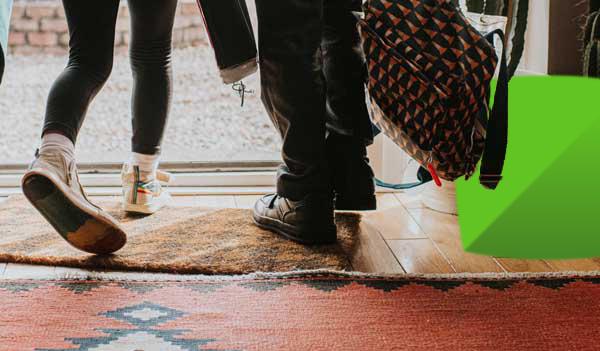Reading time 4 minutes
At a glance:
Buying a freehold property means you own the home and the land it sits on.
A leasehold means you own the property for a set amount of time, but not the land it’s built on.
Leasehold is more common in flats than houses.
What is leasehold?
Buying a leasehold property is more common in flats than houses. This means you own the flat for a set time, shown on the lease, but the land the building sits on is owned by someone else. This person or company is called the freeholder.
Things to consider when buying a leasehold
Extra costs
There will usually be two extra charges with a leasehold that are paid monthly or every year:Ground rent – paying rent for the ground your property sits on (ground rent on new developments was banned in 2022 ).
Service charge – the cost of maintaining the building and grounds.
You’ll need to know what the current costs for these are, as well if these could rise in the future.
Upkeep responsibilities
If you buy a leasehold flat, you are responsible for it. Communal areas such as hallways, stairs and gardens, and the building structure (like the roof) are the responsibility of the freeholder.They need to manage the upkeep of the property. They will split the costs with the leaseholders to cover the payment.
Restrictions
There could be clauses written into the lease that affect what you can do. For example, are you allowed pets? Can you sublet? What if you wanted to change the layout of the property? It’s best to ask about these before deciding to move into a leasehold.Length of the lease
A shorter lease (less than 83 years) can make the property less valuable. The way to resolve this is to extend the lease, but this can cost a lot. You can ask to extend the lease.
If you’re buying a leasehold property make sure you read the lease closely. Get expert advice if there’s anything that you’re unsure of.
What is freehold?
A freehold is less complex. You own the property and the land it sits on. There is no third party involved and you don’t have to worry about ground rent or service charges.
You have control over what you do with the property, so you can renovate or get a pet if you want to!
Unlike a leasehold, you’ll need to pay for any maintenance, repairs or upkeep yourself.
You have control over what you do with the property, so you can renovate or get a pet if you want to!
Unlike a leasehold, you’ll need to pay for any maintenance, repairs or upkeep yourself.
What are the key differences between the two?
Ownership
- Freehold: you own the property and the land it sits on.
- Leasehold: you own the property (for a set time only) and not the land it’s built on.
Gardens
- Freehold: you’re responsible for the maintenance of your garden.
- Leasehold: the freeholder is responsible for shared spaces, like gardens.
Ground rent & Service charges
- Freehold: you don’t have to pay ground rent or service charges to anyone.
- Leasehold: You have to pay ground rent and service charges. These can increase over time.
Remortgaging
- Freehold: Remortgaging is more straightforward.
- Leasehold: It could be more complex to get a mortgage on a leasehold property.
Maintenance and upkeep
- Freehold: you pay to maintain the property
- Leasehold: the freeholder arranges the upkeep of the building. They will split the costs across the leaseholders through the service charge.
Freehold and leasehold explained
We’ve teamed up with Doshi to build your money confidence. Explore interactive lessons and quizzes at your own pace.
The content on this page is for reference. It is not financial advice.
For help with money issues, try MoneyHelper.
For help with money issues, try MoneyHelper.



